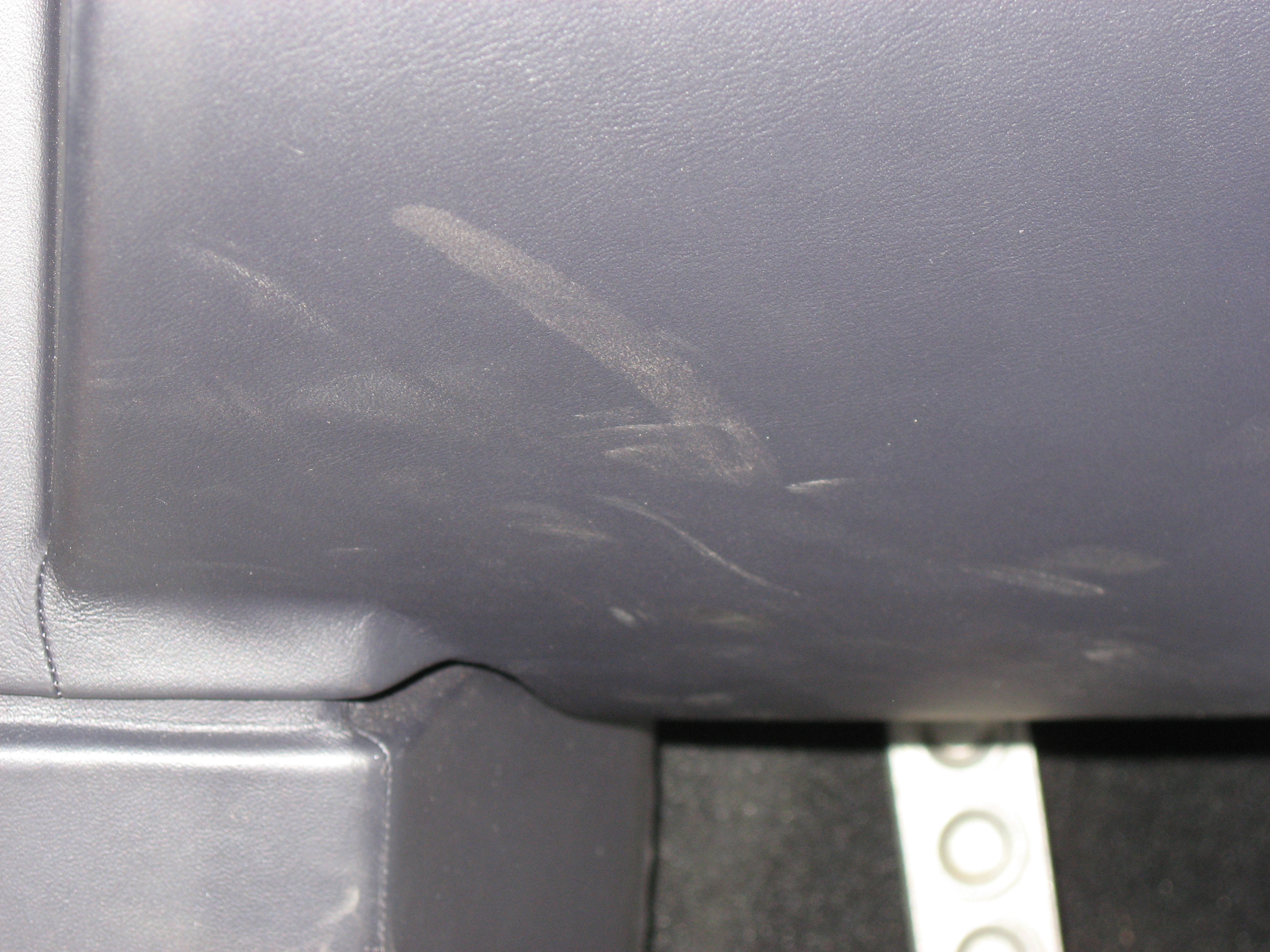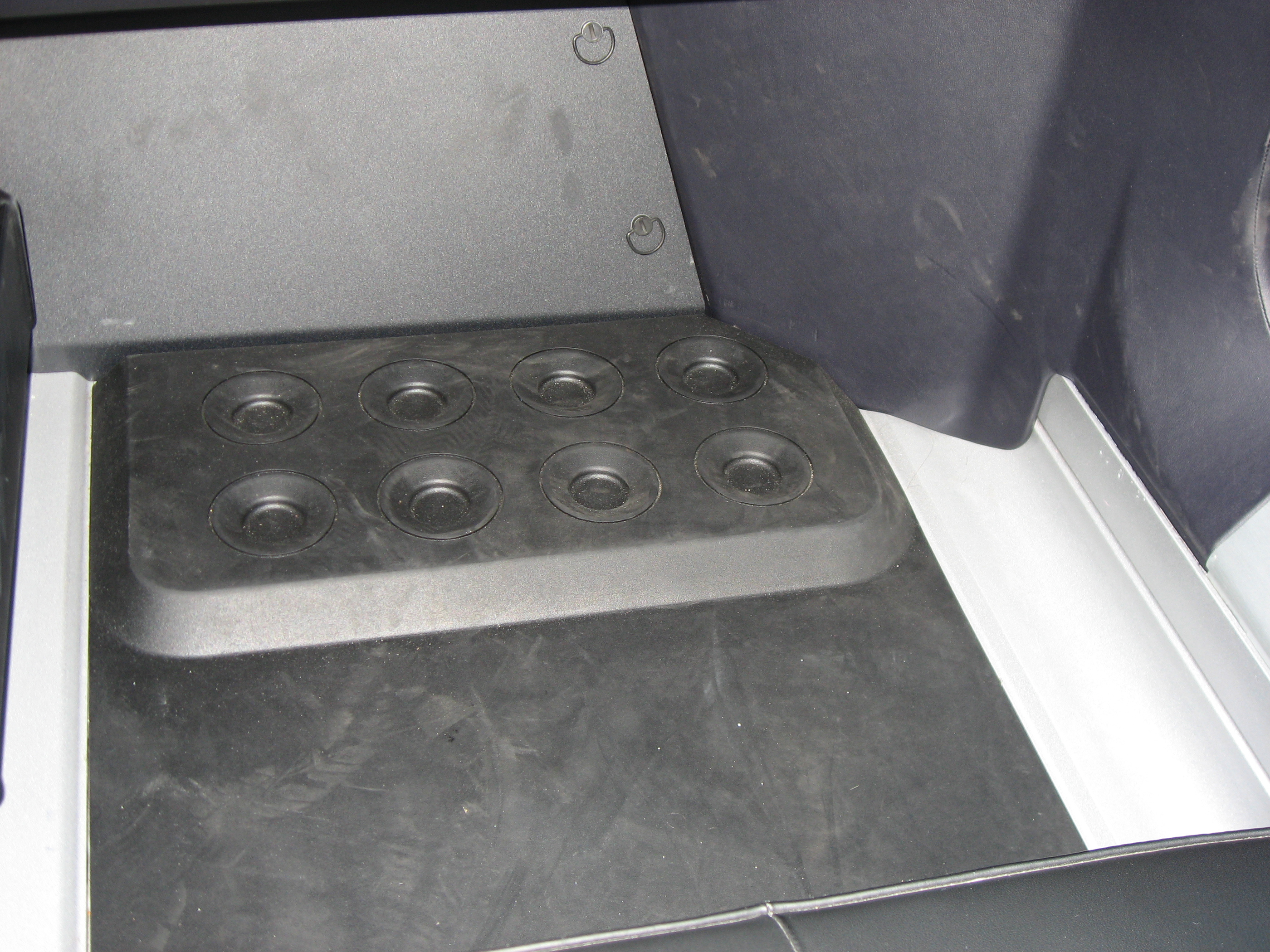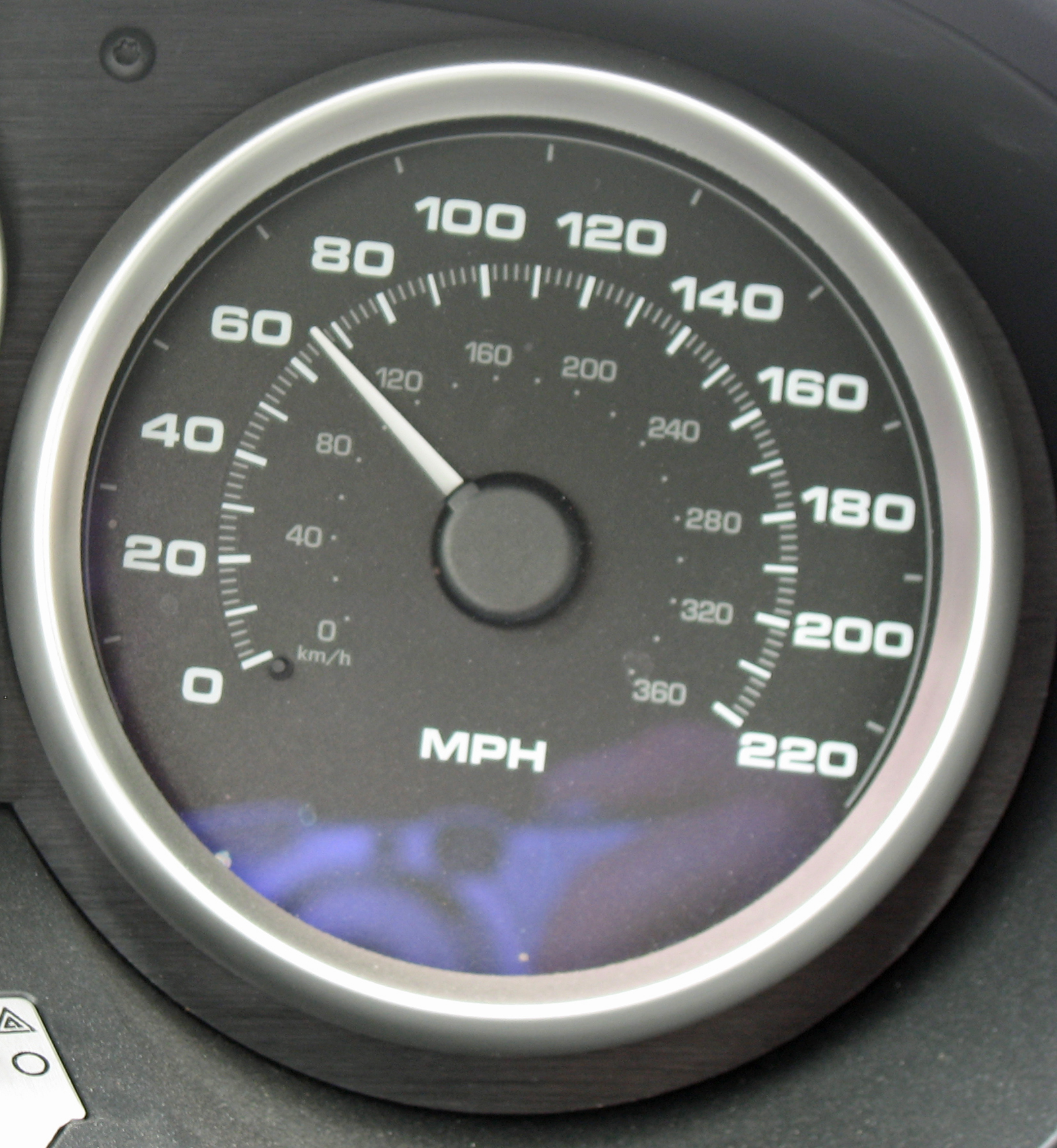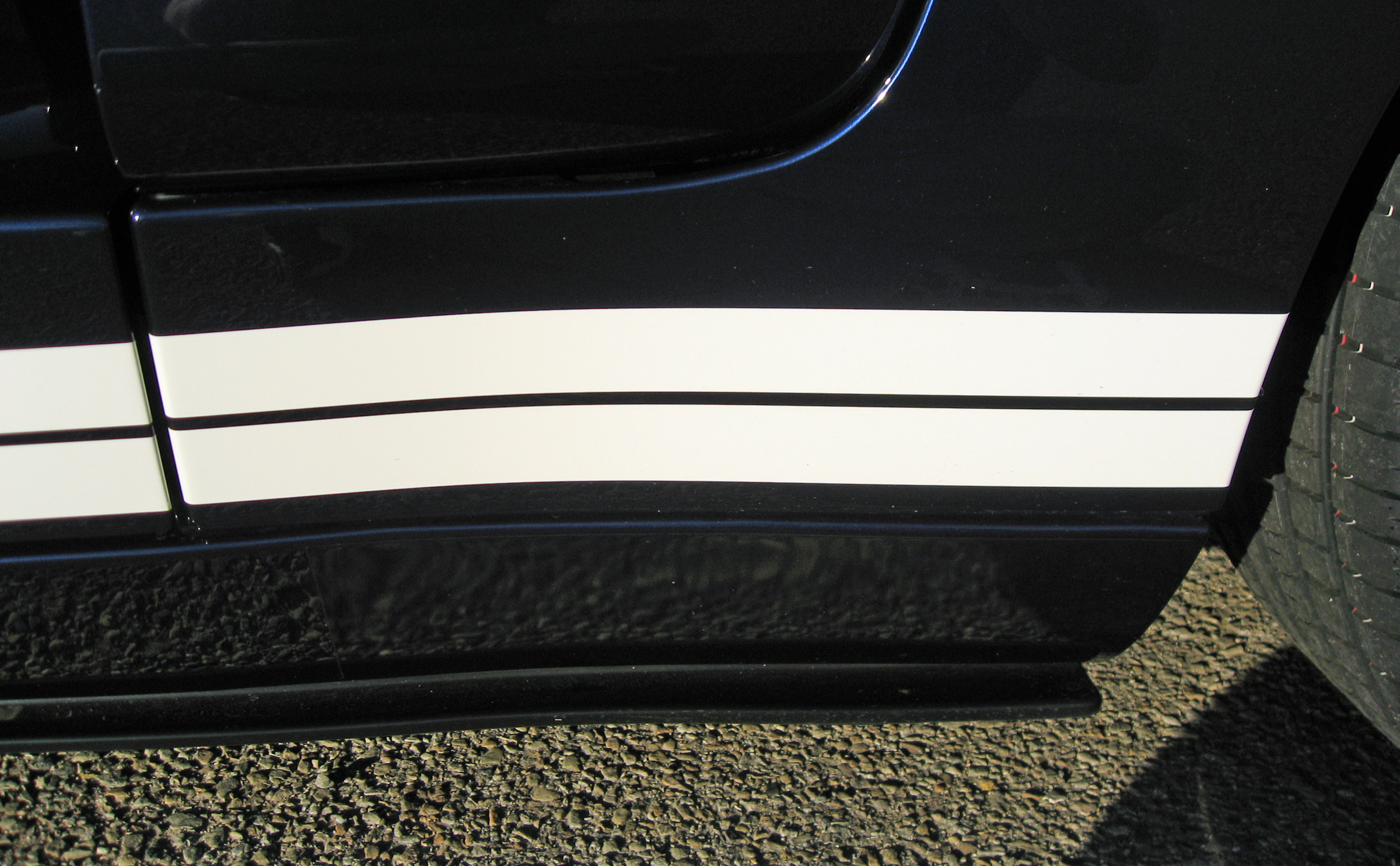I still remember the Southern California “winter” of 2006-2007 as one of unusually “cold” temps and foggy/rainy days (sorry, as a Denver native I have to put quotes around “winter” and “cold” when I’m talking about Southern California). Of course, that’s the kind of weather us SoCal residents pray for these days — it’s been really hot here the last few years. Anyway, the Ford GT only added about 300 miles this month because I wasn’t driving it on those cold days. However, I did add some commentary (that proved incorrect…) about the car not having any floor mats included in the $150,000 price. I also talked about the Ford GT’s proper speedometer, a tire design that protects wheels, and the (sadly) appropriately named “kick” panels in the GT’s cabin.
Ford GT Doesn’t Come with Floor Mats…Or Does it?
January 2, 2007 at 7,190 miles
I’ve arleady whined about the lack of “special-ness” to the Ford GT’s key fob, but here’s another item you might expect to be included with your $150,000 purchase price — floor mats. The GT doesn’t come with any from the factory, and aftermarket units remain few and far between (though a couple companies are starting to offer them). On the one hand it’s not too big of a deal, because the car’s floor boards are a combination of metal, plastic and rubber that seems pretty durable. But, with the “cooling holes” design (also used for the seats) you get to clean out each hole separately when they’ve filled up with mud and other crud…
Charging extra for floor mats is common in most modern cars, but for this kind of money it seems like a set of $80 mats thrown in wouldn’t be asking too much.
Follow-Up on 1/3: My bad. It turns out the rubber flooring you see in this picture IS the floor mat. After checking with some other owners I’ve learned that these pieces, while feeling glued down and part of the floor, are actually removable. It takes some hard yanking, but you can get them out. At this point I’d still like to add carpeted floor mats, but my original statement that “no floor mats are included for $150K” is technically incorrect.
Ford GT Speedometer Fit its Top Speed
January 16, 2007 at 7,240 miles
Unlike too many cars (and people) with ill-fitting speedos, the GT’s is about right, with a maximum figure of 220 mph. High-speed testing at the Nardo track in Italy during the GT’s development had it going between 208 and 212 mph over the course of several runs. Ford certified the car as a 205 mph vehicle because they were confident that, even with production variances, all Ford GTs will be capable of at least 205 mph. If you go on various supercar/video Web sites you can ride along as people “test out” their exotic’s speedometer, and I’ve personally seen video of a guy in Germany doing 218 mph in his GT on the autobahn (he had the camera mounted between the seats)…
Certainly not a very responsible way to confirm the speedo’s legitimacy — but I admit there’s a part of me that likes knowing the car can go that fast, especially since I didn’t have to verify it myself. It’s like a fire insurance policy — good to know it’s there, even if you never plan on using it.
Ford GT Paint is Holding Up Remarkably Well
January 22, 2007 at 7,290 miles
I spent much of the past two weekends using the Zaino polish system on the Ford GT. I’d heard good things about this product, and after a year-and-a-half of ownership, it seemed time to treat the GT to a worthy polish system. I’ve cleaned it at least once a month. However, I’ve never polished it. The Zaino system is pretty involved. First clean with water, then use the Z-18 clay bar and clean again, then ZFX polish, then Z-6 detailing spray (a secondary bonus of this system is the bulking effect it has on your shoulders). The paint is glass smooth now, and cleaning it like this after 7,300 miles makes for a great opportunity to check the road rash level and the overall condition of the paint. Happily, the GT is fairing well in both areas. There are a few small pits in the expected areas on the front end. How small? After repeated attempts I gave up trying to capture them on film (or in pixels). Without an extremely careful and dedicated inspection you’d never see them.
The same holds true along the lower rocker panels. Where the body bows out to meet the rear wheels there are definitely some small chips, but again you’d never see them without a close inspection, and capturing them in a photo is not gonna happen. For a car with 7,000 miles (more than a few of them at, umm…highway speeds plus…) this is pretty impressive. There were some paint issues when production of the GT began in the fall of 2004. It appears Ford ultimately got it right.
The kick panels in the Ford GT are, unfortunately, living up to their nameFord GT Unintended “Kick” Panels
January 29, 2007 at 7,390 miles
When talking “exotic” cars versus “normal” cars one of the biggest adjustments a potential buyer has to make (after purchase price) is entry/exit procedure. Exotics are typically low to the ground, which can mean all sorts of creative body motions when getting in and out of them. Add in the GT’s specific design quirks (i.e. those “Le Mans” door cuts in the roof) and you have an extra layer of quirkiness that goes beyond even the most quirky of exotics. The result is an unintentional flailing of limbs to balance yourself while doing the “GT Limbo” during entry.
We already noted the scuff marks on the door panels from people hauling their feet in and out of the GT, but another “kick panel” area I just discovered was the lower dash. This is on the driver’s side, so it’s not coming from careless passengers — it’s coming from my clumsy size 11 shoes. I’ve been faintly aware of occasionally “brushing” the dash with my feet while getting in, and the scuffs in the dash are relatively minor. But there are several of them. And just like the outside, driver’s seat bolster you often see wearing thin in sports cars from people sliding in and out of the seat, this kick panel is another area that, bottom line, is seeing extra wear. With some careful concentration while sliding behind the wheel I can thread the needle between the GT’s large seat bottom and low dash without my feet touching either, but how hard can one be expected to work every time they get into a vehicle?
This must be why plenty of exotic car owners eventually bail on their expensive toys and just buy a big BMW/Lexus/Mercedes sedan with 400-plus horsepower. I’m not there yet, however (unlike during my younger days) I can at least fathom the concept of finding exotics too much trouble.



